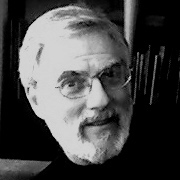
|
|
In this two-hour workshop, Thomas Brod and Wm Scott will review non-linear dynamic theory and its successful application in NeuroCare Pro and the new BrainPaint application of Bill Scott. We will consider the relationship of neurofeedback to subjectivity in cases of patient recovery. Is the process de-humanized when the computer is the Analyst and the patient's "brain? is being trained? Thinking in terms of brain-computer interface would seem to remove two "selves" from the self-regulation process--that of the therapist and that of the patient/client - but actually allows a non-materialist generative perspective. Emphasis in the workshop will be on enhancing therapist effectiveness when it appears on the surface that "nothing is happening."
We will address the observations of the "self-regulating brain" which have confounded the standard neurofeedback paradigm of the operant conditioning model applied to specific frequency training. The EEG reflects brain communication which is inherently non-linear. Why expect linear measures, including the quantitative EEG (QEEG), to train "brain waves"ie, state management. Detailed consideration will be given to protocol-based feedback vs. Val Brown's "information value" based feedback. Additionally, there are elements of EEG biofeedback assessment, protocol selection and post-session reassessment that can be computerized, once they are manualized. The BrainPaint program now has a beta version performing these functions. Several cases will be reviewed in detail. Brain damage from early childhood and post-stroke patients will illustrate dramatic recovery of chronic dysfunction from non-linear dynamic feedback. Presumably these illustrate the effects of brain plasticity in fully developed people. Group discussion will be expected in this workshop.
Thomas M. Brod, MD, DFAPA is a faculty member of the New Center for Psychoanalysis, Los Angeles, and Associate Clinical Professor of Psychiatry, UCLA. He has chaired the course on Neurofeedback at the American Psychiatric Association annual meetings for the past four years. In late 2005-early 2006 he organized and chaired two conferences for the Museum of Contemporary Art in Los Angeles tied to their exhibition entitited, "Ecstasy: In and About Altered States". In May 2007, he will chair a symposium on psilocybin research at this year's American Psychiatric Association annual meeting. Other Products by Thomas Brod 1) Non-Linear Dynamic Neurofeedback: Wrangling Information For the Brain-Computer Interchange
To View Comments or Join the Conversation: |
Most Viewed of all Products
Interhemispheric EEG Training: Discussion and Demonstration
|

